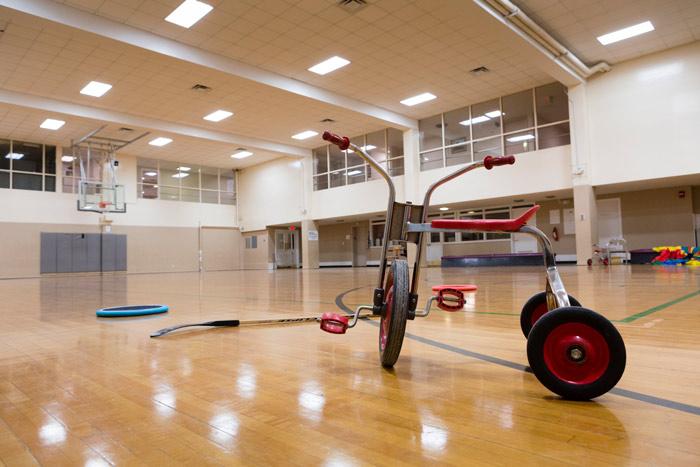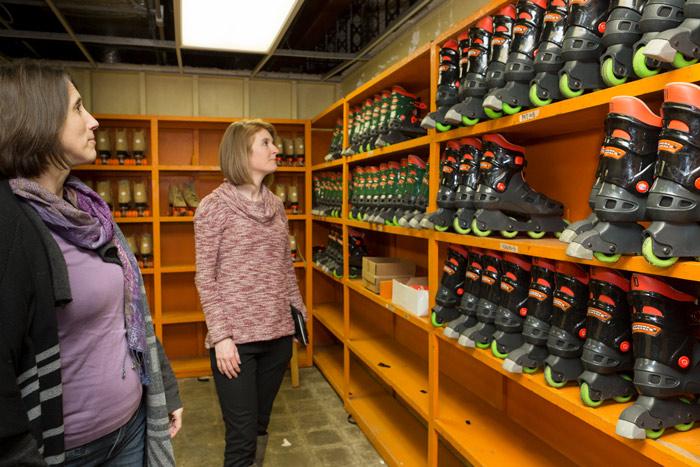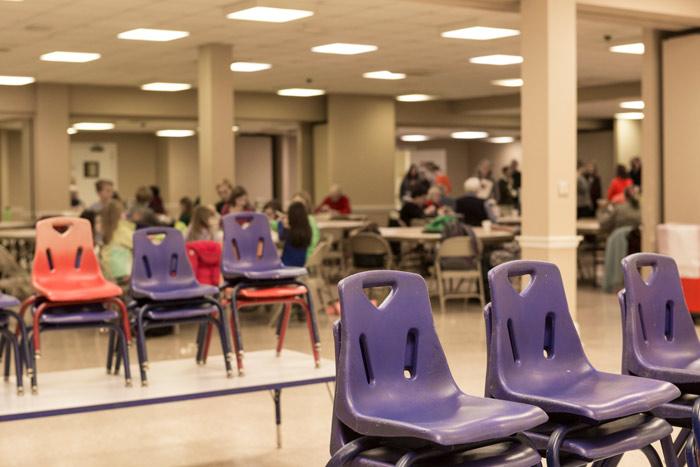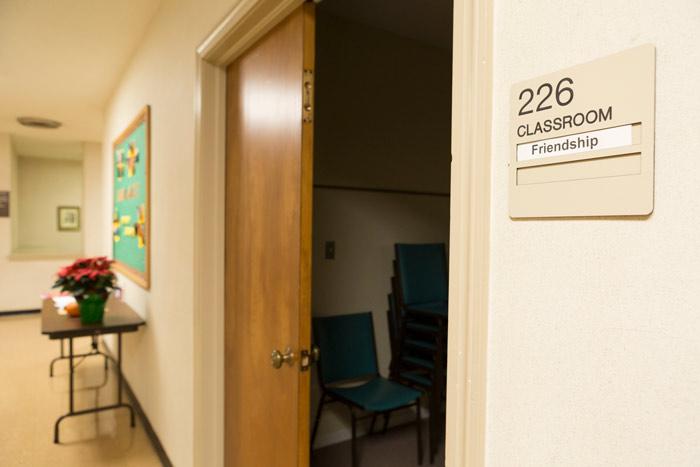The formerly enslaved artisans who constructed First African Baptist Church in Beaufort, South Carolina, sometime after the Civil War didn’t use nails. Metal was expensive and often hard to come by for Black builders less than a generation from bondage.
The Rev. Alexander McBride, First African’s senior pastor, explained how the laborers built the church in Gothic Revival style, noted for its signature pointed arches and windows. The current building replaced an antebellum praise house, an open one-room clapboard space with little furniture so the enslaved could engage in a more mobile, joyful service removed from white surveillance and sit-quiet worship styles.
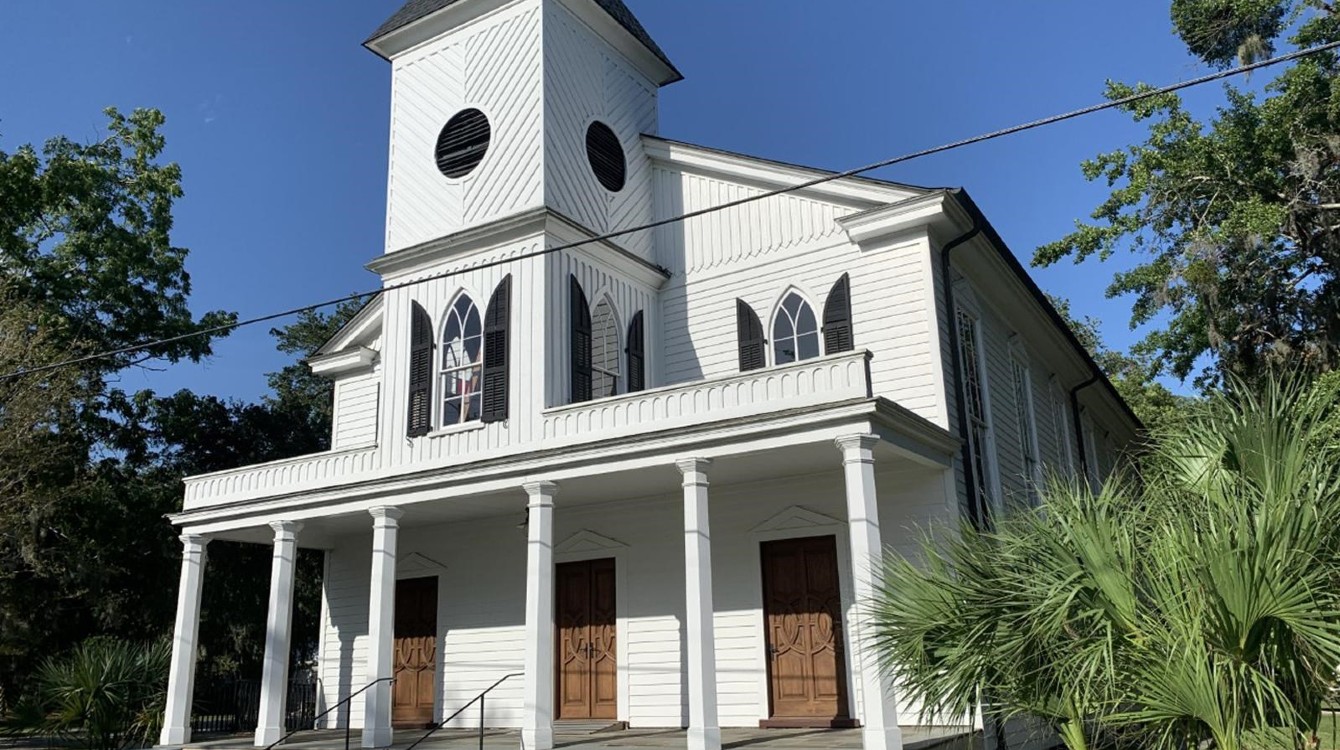
“They used the mortise-and-tenon method, where they interlock the wood. And this church has withstood every hurricane” that has rolled through the coastal city, said McBride, the 16th pastor at First African in its more than 150 years of existence.
And there have been many storms. An 1893 hurricane drowned many of the town’s Black residents, stranded in low-lying areas or swept to their deaths. But even that massive storm didn’t cause significant damage to the church, thanks to the unnamed craftsmen who may have lacked nails but had possessed the skill and wisdom to use the strongest joint known to woodworkers.
The church’s biggest current enemies are time, termites (which have eaten their way through some of the structure’s undercarriage) and moisture — largely unavoidable menaces for a century-old building in a humid seaside town.
Earlier this year, First African was among dozens of historically Black churches to win grants from the National Trust for Historic Preservation’s African American Cultural Heritage Action Fund. Those monies, through the Preserving Black Churches initiative — $4 million in this funding cycle — will support projects that recast their sites’ history through new interpretation or exhibits, grow capacity through staff hires and community outreach, and repair aging or damaged buildings.
Diversity of spaces
The grantees highlight the diversity of Black worship spaces and the history of how Black Americans have fought for religious freedom and built their own institutions amid racism and violence. They include institutions such as 16th Street Baptist Church in Birmingham, which just marked 60 years since the Ku Klux Klan bombing that killed four girls and damaged the church; the elegant Black-majority Basilica of St. Mary of the Immaculate Conception in Norfolk, Virginia; one-room churches built by hand and heart; and churches in places with historically small Black populations, such as Alaska and West Virginia.

“Black churches are living testaments to the achievements and resiliency of generations in the face of a racialized, inequitable society,” said Tiffany Tolbert, the Action Fund’s senior director for preservation. “They’re foundational to our Black religious, political, economic and social life.”
In some places, a church is the only building that remains as an artifact of a Black community that no longer exists. Scotland AME Zion Church in Potomac, Maryland, not far from the nation’s capital, is one such example from a community swallowed by encroaching development and urban sprawl.
Religion scholar C. Eric Lincoln once described the Black church as the unchallenged “cultural womb of the Black community.” Fellowship halls and sanctuaries in Black churches have long functioned as multipurpose rooms, where worship and politics meet. Churches like Beaufort’s First African have been incubators for Black social enterprise; during Reconstruction, First African was the site of a school for freed people, hungry for the literacy denied them during slavery.
Numerous historically Black colleges, civil rights protests and social movements trace their origins to Black pulpits and pews. Preserving church spaces can thus have a multiplying effect, documenting as well the stories of Black communities at large and the work of Black architects, artisans and mutual aid.
Worthy of preservation
It’s commonly said that the church is “more than the building,” yet buildings are material remnants of history and culture. What kinds of meaning do church buildings have for you?

That’s the case with the Halltown Memorial Chapel, built in 1901 not far from Harpers Ferry, West Virginia, where abolitionist John Brown and his band of brigands in 1859 had raided an arsenal in hopes of ending slavery. The one-room chapel is small, only about 40 feet by 50 feet, with room for 13 pews. It was built of rubble stone by church members, stone masons and laborers who also constructed a nearby turnpike or worked at the local paper mill, which has since closed. Services continued there for decades, only ceasing after World War II because of a dwindling congregation. After that, it hosted the occasional gathering until its last event — a wedding of one of the founders’ descendants — in 1988.
Kim Lowry, the treasurer of the Halltown Chapel Memorial Association, cataloged the many repairs needed via email. “Water damage from a hole in the roof and from water seeping in under the foundation was the culprit. And without regular events or services, the chapel suffered from neglect. The plaster walls needed to be rehabilitated, the flooring had rotted and deteriorated and required replacement, and exterior work was required on the wood window sills and frames and the Chapel entrance area.”
Powderpost beetles had chomped on the pews, spreading ruin with every bite. One of the church’s three stained-glass windows was missing altogether, and the others needed restoration. One is a poignant tribute to Edna, a church member’s child who had died in infancy. Such design features — with references to congregation members who fundraised for such elements — are tangible history, traces of people long gone and their efforts to build beloved community.
“It’s impossible to talk about American craftsmanship without talking about the Black and Indigenous hands that constructed it even before 1776,” said Brandon Bibby, a senior preservation architect with the Action Fund. “It’s important to preserve that aspect so that we as a society don’t forget. By preserving, we are saying, ‘This place matters in the whole context of the American landscape.’”
“What I want most is that through this project, Black congregations and communities will see the value and beauty in their places and see they are worthy of preservation,” he said.
Does your church have a historic role in your community? How has its role changed over the years?

Recognizable elements of church design can be particularly vulnerable to deterioration. Steeples are both symbolic and pragmatic communicators; their towering presence in a landscape announces where people can worship or seek shelter. Yet sitting aloft, largely inaccessible, placing strain on dramatic, heaven-pointed roofs and often channeling rainwater to places it shouldn’t go, steeples can be a source of problems that go unnoticed until a leak sprouts or cracks appear.
Many of the Preserving Black Churches grant recipients need steeple repair. When congregations are forced to choose among costly repairs, a steeple can sometimes take a back seat to high-traffic areas with more visible problems, such as the sanctuary itself.
Funding a range of needs
What traditional elements of your church are difficult to maintain? Would your congregation be OK without them?
Declining church attendance has meant less coin in the collection plate and, in turn, fewer resources for maintenance and repairs. Black American church membership has dropped in recent years, from 78% in 1998-2000 to 59% in 2018-2020, though Black Americans remain one of the top populations most likely to be church members (along with conservatives and Republicans), according to a multiyear Gallup poll released in 2021.
A 2012 Kellogg Foundation report also found that Black people give more of their income to community-based causes than whites, in part because of a culture of mutual aid, lack of access to white-dominated institutional funding and traditions such as tithing. Even so, when an evangelical research firm surveyed church financial well-being, more Black pastors said their congregations had less than seven weeks of cash reserves — perhaps because they are dependent on a community with lower wealth in the first place. Getting money to repair churches can be particularly difficult.
Following the first grants that went to 35 churches across the country, recipients of another $4 million will be announced in January, Tolbert said, as part of a plan to distribute between $8 and $10 million, with support from Lilly Endowment Inc. In total, $20 million will be invested through Preserving Black Churches across all of its program goals.
If you were asked what in your church is worth preserving, what would you say? What would your congregation say?
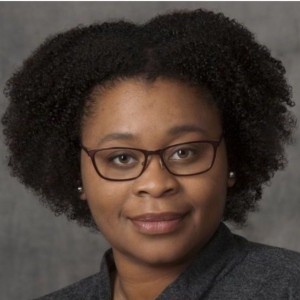
That funding will go not only toward capital needs, Tolbert said, but also toward planning, to help churches understand how to undertake preservation. Matching grants will help churches create new preservation endowments so that invested income can be used to support maintenance and preservation of existing buildings. Emergency grants are also available to address immediate issues such as damage caused by floods, fires and even acts of vandalism.
And the Action Fund is working with six churches — four in Alabama and one each in California and Chicago — to help develop comprehensive stewardship plans that will address restoration and rehabilitation of the buildings along with programming and interpretation, activating space for community, and bringing in arts and social justice programs. They will benefit from a consulting team of architects, engineers, business planners and capital campaign fundraisers.
“It is essential that these places are activated,” Tolbert said. “They are centers of worship, but also, they continue to serve the community.”
Action Fund executive director Brent Leggs told The Washington Post in an interview that Black churches are exceptional lenses through which to view Black and American history. “It’s amazing to see centuries of Black history told at historic Black churches. Some of the stories include formerly enslaved Africans moving through emancipation, beginning to form communities, … and some of the earliest buildings founded by African Americans in the United States [include] a Black church. These places are of exceptional significance. Their stories matter, and they are worthy of being preserved.”
Would members of your community benefit from learning more about your congregation’s past and its role in local history?
Questions to consider
- It’s commonly said that the church is “more than the building,” yet buildings are material remnants of history and culture. What kinds of meaning do church buildings have for you?
- Does your church have a historic role in your community? How has its role changed over the years?
- Steeples are a traditional element of many churches, yet they can be difficult to maintain. What traditional elements of your church are difficult to maintain? Would your congregation be OK without them?
- If you were asked what in your church is worth preserving, what would you say? What would your congregation say?
- How is your space “activated” for your community? Would members of your community benefit from learning more about your congregation’s past and its role in local history?
What does having a financially sustainable ministry mean? The one-size-fits-all answer is simple. The revenue coming in is consistently more than the expenses going out. But this simple answer obscures the gap between those benefiting from generations of building wealth and those in Black and brown America who have had wealth stolen across the years. Calculating sustainability needs to account for this gap.
I hope that the current pandemic, economic recession and renewed attention to racial inequity is teaching those in the dominant culture that one size does not fit all. When “we” talk about money, the field is never level.
African Americans were treated as property for generations while white Americans were acquiring land and accumulating money. The starting places for families in these communities today is not equal. Whenever we discuss financial sustainability, we have to examine the conditions that create, or that make it difficult to create, wealth.
Sustainability is a sought-after goal in new-program development. In financial terms, it refers to developing revenue sources that provide funding to keep the program going. Sometimes it is as simple as one funder asking the program to find other donors. Sometimes it means adding fees to the service or getting somebody else’s budget to pay the cost. Often it includes reducing the cost of the service to match the expected revenue.
As a white leader in a dominant-culture organization, I hear the talk about making adjustments and raising more money — and it all seems doable. The pandemic has thrown up a roadblock, so reaching sustainability will likely take more time, but “we” believe that “we” can be back to normal in six months or a year. A few think that “we” are in for a decade of economic difficulty.
The use of “we” covers up the different experiences in different communities. When listening to colleagues in organizations founded by and rooted in African American and Latino/a communities, I recognize that they hear talk of sustainability differently. They have learned to say what funders want to hear, but they translate the words into a different set of actions.
For example, I have encountered a handful of organizations in these communities that recently had applied for but did not receive a $1 million grant to serve pastors. Most of these organizations moved forward to develop and deliver as much as they could of the proposed program without the money. How? Mostly through unpaid labor. People affiliated with these organizations took on a second (and sometimes third or fourth) job to serve pastors. In economic terms, these organizations were investing sweat in place of money in order to do what was both most important and possible.
In financial terms, it looks as if these programs are doing great. In fact, they don’t seem to need the grant money. But when we listen to their stories, it is clear that valuable ministry is being performed by exhausted leaders.
The white-culture organizations where I have worked talk about priorities. These organizations have the privilege of deciding how to serve according to the financial resources available. But I have observed many organizations that are part of African American and Latino/a communities prioritize according to the needs of their communities and the world. The leaders of these organizations do what is needed regardless of the money.
How can I learn from this dedication and not participate in taking advantage of it? One element of privilege is not recognizing the impact of categories like sustainability on those without privilege.
This realization has made me more careful when planning a collaborative project with organizations from different cultural, racial and ethnic communities. For example, I now ask partners about pay equity across the project for the same work. I don’t assume that because employees at my white, dominant-culture organization are paid a fair wage, all the collaborating organizations are able to do the same. How do we plan the project so that people are paid equitably?
In fact, the concern starts in the planning phase. What creates the conditions so that all the organizations involved in planning a project have the resources to do the planning? Those with wealth have the option of choosing to shift their efforts to a new project. Those with no resources have to double up on their work to do something new.
If a project is underway, what would it be like to count the labor of these leaders as part of sustainability? What would it be like for donors to see that they are matching a contribution of labor and recognize that effort as part of sustainability?
What would happen if donors recognized the vast disparity between the assets accumulated by white-dominant organizations and white families when compared with African American and immigrant institutions and families? What if the funding levels were calibrated to address these disparities? What would happen if organizations in these communities had significantly longer to develop sustainability plans for donors?
In the midst of economic challenges, more complex and nuanced definitions of sustainability need to be used. All who donate and benefit from donations can learn to pay attention to the needs in communities, as well as who can be supported to address these needs. Moving too quickly to asking a program to “pay for itself” can continue a cycle that takes resources away from long-disadvantaged people.
As a white leader, I must learn more about the challenges faced by my colleagues in different racial, ethnic and cultural communities and advocate for adjustments that provide a path to more equity. I must not leave all the weight for making this case on these leaders.
Sustaining a program is a heavy burden. The program may bring in less money than it spends. Some constituents may question its worth. Additional funding sources when grant money runs out can be difficult to find. Plus, sustaining a program means meeting people’s future needs, which can be hard to predict.
The urgency of discerning how to sustain a program forces leaders to examine every detail: Could we charge more? Do we have to serve lunch? Could the program be shorter? What elements are costing us the most? Could we trim those larger expenses?
If such adjustments to revenue and expenses are possible, congratulations! But for many Christian leaders, the overall budgets of our organizations are so constrained that the minor adjustments we are free to make might not result in sustainability. In these cases, assuring the long-term effects of a program requires revisiting foundational questions about its purpose and impact. For example:
- What constituents does this program serve? What needs does it meet?
- How do constituents say this program helps them? How does it change the way they do their work?
- Why is the program important to the organization offering it? How it is aligned with the organization’s mission?
These questions must be answered at an institutional level, but they are individual questions, too. Why is this program important to you? How is it related to your vocation and the vocations of your key program leaders? Would the program fall apart if you or another team member left? Does the institution’s senior leadership support this program, now and into the future?
With a clearer sense of the program’s purpose and impact, it is time to envision and plan various scenarios. I find it helpful to peel apart the question of sustainability by looking at what is required to sustain specific program elements. For example:
- What is required to continue the most significant and high-impact activities?
- What is required to continue the jobs the program created?
- What is required to support constituents and outside partners?
- What is required to sustain the ways of thinking, feeling and working the program is encouraging?
Almost 20 years ago, I was part of a grant-funded program to support pastors in my newly formed denomination. As the team evaluator, I was responsible for stepping back from the day-to-day and helping articulate the difference the program was making.
Initially, our focus was on how the program’s activities — the peer groups, sabbaticals and seminary graduate residencies — were affecting the people involved. Participants reported that the activities were life changing, but the donors we pursued were not excited about funding the program.
After a few years of asking questions, our team realized that sustainability was less about the activities of the program and more about a shift in mindset for congregations and clergy.
Our new denomination had inherited from its predecessors a view of pastors as replaceable parts. When a congregation felt disappointed with any aspect of the pastor’s leadership, the easiest adjustment was to simply replace the pastor. That denomination had large seminaries that graduated hundreds of pastors each year. There were plenty of available replacements.
We began to see our program’s goal as encouraging congregations to see pastors as renewable and renewing. The metaphor we used was that a congregation was a garden and the pastor a plant that both needed and provided nurture. The program would be sustainable, we realized, when congregations began changing policies to grant sabbatical time and increase continuing education funds. We hoped to see clergy forming peer groups without the encouragement of money.
In our case, sustainability was not determined by fundraising. We were hoping to see shifts in behavior and priorities — a purpose we recognized only by asking questions about impact from multiple points of view.
In this story, I have the advantage of 20 years of hindsight. Developing sustainability plans seldom has such a clean narrative. In the early years of a program, I have benefited from using these first, foundational sets of questions to gain information and then formulate a few scenarios. In the case of my denominational pastor program, those scenarios might include:
- What if every pastor had a mentor? How would pastors need to be supported to engage in such relationships? Who would provide such support, and what would the cost be?
- What if every congregation provided sabbaticals to its pastors? What conditions would be required to support such time away? Who would need to support such efforts, and what would that look like?
Each “what if” question generates a plan. Those planning for sustainability are working to encourage the desired conditions while also watching for evidence that they are being achieved. Over time, the individual scenarios begin to come alive. Eventually, the scenarios can be combined to create a single plan for sustainability.
Sustainability planning requires intentional time and space. I recommend setting aside time at least twice a year to update answers to key questions and revisit the scenarios being considered.
Don’t do this work alone; sustainability is a team activity. Program leaders are most often responsible for raising the questions, gathering information and suggesting alternatives. But the work of future planning necessarily includes your team, participants and stakeholders. The more a program can engage its constituents and institution in the process, the better.
More than 50 years ago, a church member with a love of children badgered the Rev. Randall Lolley about the congregation’s underused space: “We can’t have these rooms sitting empty,” Mitzi Moore told him. “I think we should start a school.”
Scattered among the church’s three large buildings that cover an entire city block in Winston-Salem, North Carolina, were 49 Sunday school classrooms.

In those days, First Baptist Church on Fifth, one of the city’s most stately and historic congregations, had more than 2,000 members and had grown to encompass 114,000 square feet of space, including a gym and a chapel. Yet even then, classrooms stood empty during the week.
Lolley, one of the most forward-looking pastors of the era, agreed with Moore, and the church founded the county’s first racially integrated day care for children ages 8 weeks to pre-K (plus an after-school program for children through age 12).
This month, the five-star center will close as the church prepares to tear down two of its buildings in a revitalization effort aimed at pushing a now much smaller congregation into the 21st century.
After months of investigating options for keeping the center open or moving it to a new location, the church could find no viable solution for its signature ministry, which it subsidizes with $100,000 a year.

Scores of mainline Protestant and Catholic churches are making similar, often painful choices. Faced with crumbling infrastructure and costly maintenance that consumes an increasingly large slice of church budgets, congregations are looking to downsize and at the same time reimagine a different vision for ministry.
“We spend so much money just keeping the lights on,” said the Rev. Emily Hull McGee, the First Baptist pastor. “We’re significantly impeded from doing new things — being creative, hiring new staff, giving more money away or finding new partnerships — because so much of our annual budget is going to the building.”
What is the cost to your organization of — metaphorically or literally — “keeping the lights on?”
Church building experts see this happening across the nation. In their zeal to build, post-World War II Americans left future generations with hulking edifices that now stand as testaments to outsize ambition.
These days, groups such as the UCC Church Building & Loan Fund, the oldest society of its kind in the U.S., do more consulting than church financing. About two-thirds of the loan fund clients are congregations figuring out how to repurpose, reuse or rethink their buildings.
“Most churches have an upside-down relationship with their building,” said the Rev. Patrick Duggan, the executive director of the Church Building & Loan Fund.
What kind of relationship does your organization have with its buildings or other facilities?
“The building becomes the important thing to hold on to. It’s an unfortunate thing when that happens, because it’s a small group of people who can’t afford the upkeep on a building trying to figure out every way possible to keep it going, and that becomes what church is.”
At First Baptist Church, members are righting that ship. They have slowly but decisively concluded they must raze two later additions, including the brick edifice that houses the Children’s Center, while repairing and upgrading their original sanctuary building.
This Advent season, they are taking stock of their assets and trying to imagine what purpose and mission will carry them into the next decade. For many in the church, it is a time of waiting.
The Camelot years
As its name suggests, First Baptist has long been a trailblazer.
Founded in 1871 at a time when the region had more Moravians and Methodists than Baptists, the church was instrumental in birthing Baptist churches in every quadrant of the town. One of its early pastors, H.A. Brown, helped organize the local Baptist association, which led the founding of several dozen more churches.
The current sanctuary, completed in 1925 in the Greco-Roman style, is round and seats 1,200. Green Corinthian columns support a soaring domed ceiling.
“When it was built, it was considered the finest church building anywhere in the Southeast,” said Paul McCraw, the church historian. “People came from everywhere to see it.”
The church reached its apex in 1957 with 2,800 members and another 700 nonresident members.
It had already built Building B to accommodate all those members, and in 1961, it completed Building C. Not only did the church open the first downtown gym; it also hired a minister for youth and recreation — a novelty in those days.
Older members have fond memories of the gym.
Gayle Edwards, 73, who grew up in the church, remembers “community night on Fridays, where people could come in and skate.”
“Basketball teams played there,” she said. “We had lock-ins, birthday parties.”
Beginning in 1967, the church also had the Children’s Center. The yearly budget paid for the upkeep of the center, including utilities and cleaning services. Tuition paid for the teachers’ salaries and supplies.
Most of those enrolled in the day care were not the children of church members, but the congregation kept its commitment to the town’s black and white working families. Most people in town would have known First Baptist on Fifth principally because of the Children’s Center at a time when so few offered such a service.
Yet despite its vibrant pastor, who went on to become president of Southeastern Baptist Theological Seminary in 1974, the church’s Camelot days were ending.
Though Baptists are still the largest denomination in North Carolina, downtown churches such as First Baptist, which is affiliated with the moderate Cooperative Baptist Fellowship, have seen a 40-year decline, as suburban churches often overtake them in numbers.
Today, its $1 million annual budget includes $340,000 to keep up its facilities. Utilities cost about $10,000 a month.
The downtown has newer, more modern gyms, and the church is no longer a hub for family outings. The buildings — with their linoleum floors and fluorescent lights — have fallen into disrepair, evident not so much in their physical appearance as in their internal workings: the boiler, the roof, the masonry are all in need of major upgrades.
As important, the church has far fewer members — some 500 active members (and another 700 inactive members). Sunday worship draws about 220.
Can you identify assets that your organization possesses? Which ones fit with your current mission? Which do not?
Earlier this summer, church members voted nearly unanimously to tear down the two buildings.
“It would be easy for folks to say, ‘Well, we’re losing a gym. We’re losing a chapel. We’re losing all this space,’” said Gary Knight, who chairs the special committee on facility and mission. “But I felt good that people recognized we have an abundance of other assets.”
First Baptist Church is ready to lead in new ways.

New leadership, new vision
When she arrived two years ago, McGee knew the buildings were in significant disrepair.
The copper dome atop the historic sanctuary was leaking; water damage from the roof was causing the plaster in Building C to flake off; the masonry on the terra cotta and limestone cornices was crumbling; and the boiler serving all three buildings needed to be replaced, as did the underground pipes.
During her interviews for the senior pastor position, McGee learned that the church was already discussing the campus’s sustainability. A research group had been formed to study the facility, and its members recognized that the church was at a crisis point.
Is your organization at a crisis point? How would you recognize such a moment, and how would you respond?
“When I came in, I knew the facilities were a problem and that I would need to tackle it pretty quickly after I got here,” she said.
The 36-year-old mother of three is the church’s first woman pastor. And she is uniquely qualified for the role.
Her grandfather, William Hull, was dean of theology at Southern Baptist Theological Seminary in Louisville, provost at Samford University in Birmingham and longtime pastor of First Baptist Church in Shreveport, Louisiana.
Her father, David Hull, was pastor of First Baptist Church in Huntsville, Alabama. He now teaches and consults while his wife, Jane, McGee’s mother, serves as pastor of Union Christian Church (Disciples of Christ) in Watkinsville, Georgia.
Pastoring is in McGee’s DNA. Still, shepherding First Baptist in a new direction weighed on her.
The research group had already suggested tearing down one of the buildings. But its report was not binding, and McGee quickly formed a new committee to bring a recommendation to the membership for a vote.
That committee set out to examine all options.
“We all started thinking we’d figure out some way to save all the buildings,” McGee said.
But the results of an engineering study made it clear to committee members that the challenges were significant. Repairing all the buildings and bringing them up to code would cost $8 million to $10 million.
And as committee chair Knight pointed out, “Even if we had unlimited resources and the ability to renovate the entire campus, it still left us with buildings that don’t meet 2017 needs.”
Critically, the repairs would not save the Children’s Center.
The state now requires day care facilities to be on the ground floor with an exit from each classroom. The current day care, which takes up two floors, is grandfathered in. If the church were to renovate the facility, it would have to rebuild the day care from scratch.
The committee spent months trying to find an alternative solution for the Children’s Center. It talked to outside partners. It studied other day cares. It priced a free-standing building. It looked at moving the center to one of the other church buildings. No viable solution emerged.
“Looking at things in a vacuum, you could say, ‘Isn’t there a critical need for day care?’” Knight said. “But what we came down to was, you could either have the church or have the children’s center. It was the toughest part of our work coming to that conclusion.”
Although the congregation largely supported the decision, they did face pushback from families whose children attend the day care.
“There were a ton of tears shed this morning,” Meg Shipley, a parent, told the local newspaper upon hearing that the center would close this month.
Ultimately, what brought life to the committee was shifting from the idea of trying to save the buildings to that of tearing them down and renovating the sanctuary building.
Winston-Salem’s downtown has been undergoing a revitalization. It now has nearly 4,000 apartment units — more than half built over the past decade — and many more in the works. Several top hotel chains have announced plans to open.
Is there momentum in your community toward growth and thriving? How could your organization be a part of it?
What if First Baptist were to tear down its crumbling buildings and be part of that revitalization?
“It felt like we were freed of a weight that was holding us down,” said McGee. “It’s as if that just freed us to think creatively about our space.”
From that point on, the committee focused its efforts on presenting the church with a scaled-back plan for a smaller campus — minus buildings B and C — that would meet the needs of a smaller but more nimble congregation.
On a Wednesday night in November, after a supper of lasagna and garlic bread, Knight, the committee chair, and McGee unveiled a PowerPoint presentation for a $5 million to $6 million renovation of the sanctuary building and the addition of a 4,200-square-foot glass atrium to the rear of the building, as well as an outdoor garden.
The atrium would accommodate shared meals, celebrations and community events. (Demolition of the two buildings, included in the total, would cost between $250,000 and $500,000.)

Still ongoing are discussions about the church’s identity minus the Children’s Center, which has defined First Baptist for so long.
In conversations during November, the church began the process of envisioning a new mission.
Perhaps the church could start a music academy for children, stage public concerts on the front steps of the building, offer Bible studies for young people downtown or partner with the Benton Convention Center one block away.
To mark the passage into a new vision, McGee suggested a history wall or mural to be filled with images, artifacts and a timeline that might help the congregation tell its story. The church could even commission artwork for the renovated structure using materials from the buildings that will come down.
Church members want to continue the mission Mitzi Moore proposed in the 1960s with the introduction of the Children’s Center. It won’t be a day care, but it will probably involve children.

“Children,” Edwards said, “will always be important to the church.”
For now, church members are captivated by the possibilities. Those include a smaller footprint but a deeper sense of community, a more modest budget but an openness to creating new ministries.
In January, the committee is expected to present the congregation with a new mission, vision and values statement.
This Advent, it is waiting for that vision to be birthed.
Questions to consider
Questions to consider
- What is the cost to your organization of — metaphorically or literally — “keeping the lights on?”
- What kind of relationship does your organization have with its buildings or other facilities? Is it “upside down?” If so, how might you begin to right it?
- Can you identify assets that your organization possesses? Which ones fit with your current mission? Which do not?
- The Rev. Emily Hull McGee learned the church was at a “crisis point” when she arrived, and that she needed to lead out of it right away. Is your organization at a crisis point? How would you recognize such a moment, and how would you respond?
- First Baptist decided to join in the revitalization of downtown Winston-Salem. Is there momentum in your community toward growth and thriving? How could your organization be a part of it?

